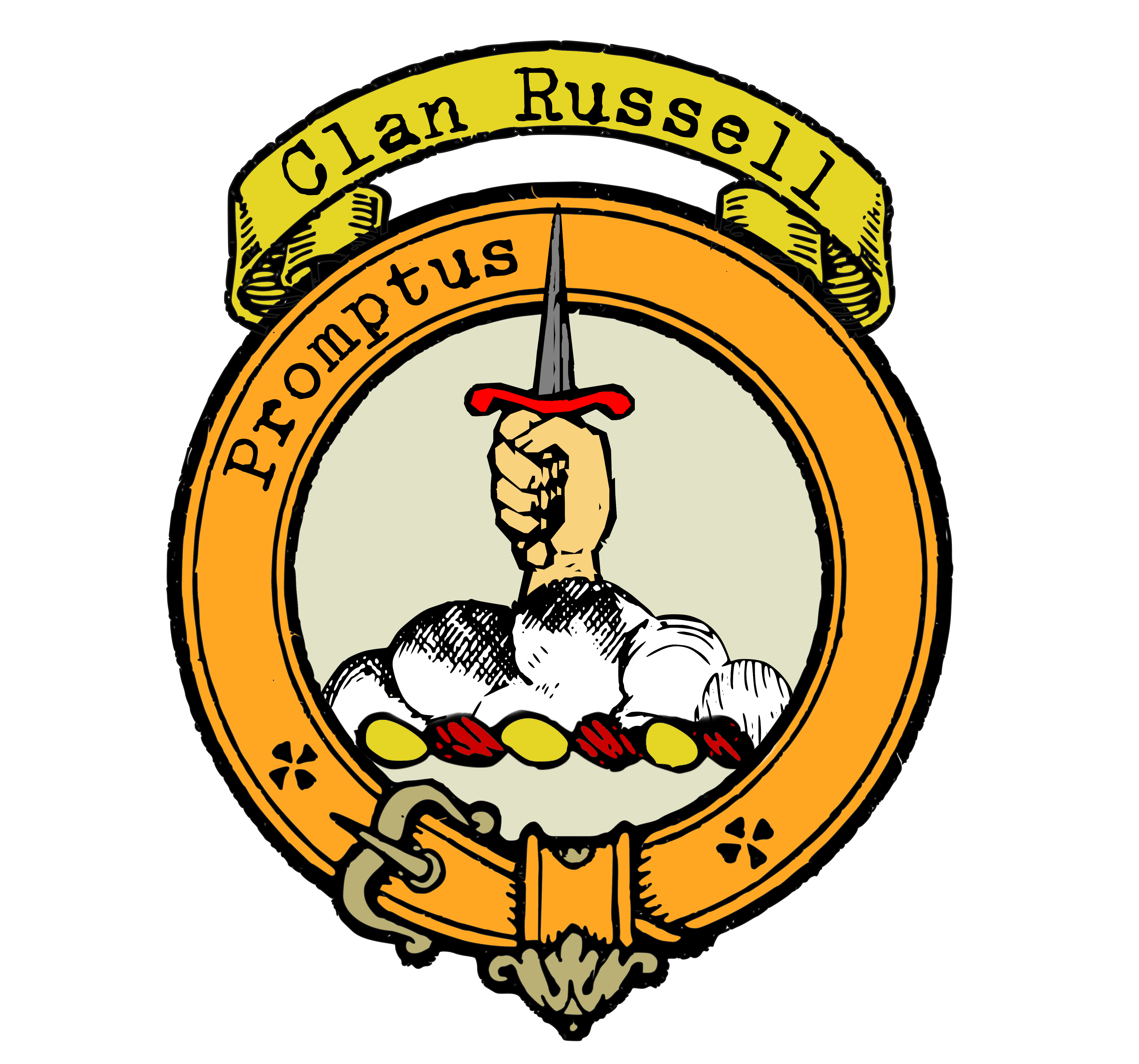Clan Russell
|
|
CREST: A dexter hand, grasping a dagger issuing from clouds Proper MOTTO: Promptus TRANSLATION: Ready VARIATIONS: N/A |
| The name “Russell” finds its roots in Old French, specifically the word “rous,” meaning “red.” It was a common personal name among the Normans and the French, often spelled as “Rufus.” This connection to the color red possibly alludes to hair color or other distinctive features of early Russell clan members.
The earliest documented appearance of the Russell name in Scotland dates back to the 12th century. Walter Russel witnessed a charter in favor of the Abbey of Paisley between 1164 and 1177, and John Russel, son of Robert Russel of Dunclanlaw, appears in a charter from around 1180. These early mentions suggest the Russel clan’s presence in Scotland for centuries. The Russel clan continued to play significant roles in Scottish history. Robert Russel, for example, witnessed a deed relating to the lands of Threipland in 1259, and another Robert Russel is listed on the Ragman Roll, a document of homage to Edward I of England, in 1296. One of the most notable figures in Clan Russell’s history was Rozel, an English baron who fought in the siege of Berwick and the Battle of Halidon Hill in 1333. After settling in Scotland, he obtained the estate of Aden, and his family came to be known as “Russel of that Ilk.” The Russels made their presence known in Aberdeenshire, with Patrick Russel, who married a sister of Archbishop Sharp, purchasing the lands of Moncoffer in Banffshire in 1680. This further solidified the clan’s connection to various regions of Scotland. The Russels of Ashiesteel in Selkirkshire were a prominent local family, particularly distinguished in military service. Colonel William Russel of Ashiesteel served under General Lord Clive throughout campaigns in India between 1756 and 1767. His son, Major General Sir James Russel, also served in India and commanded a brigade of cavalry at the Battle of Mahedpoor in 1830. Clan Russell members weren’t confined to Scotland alone. Alexander Russel, an eminent doctor and naturalist in the mid-eighteenth century, made significant contributions to the field. He authored the “Natural History of Aleppo” in 1756, showcasing his expertise and interest in the natural world. In England, the descendants of Rufus rose to become the powerful Dukes of Bedford. Lord John Russell, the third son of the sixth Duke, was a pivotal figure in British politics. He played a key role in the passage of the first Reform Act of 1832, extending the right to vote. For his contributions, he was created Earl Russell in 1861. His grandson, Bertrand Russell, became one of the greatest philosophers of the twentieth century. |
|
Citations:
|
|

Purchase @ Redbubble
Purchase @ Amazon.com
Purchase @ Amazon.co.uk

